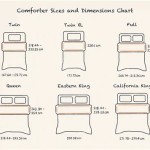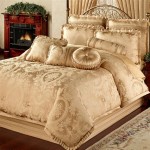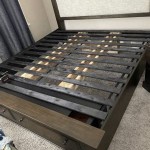Queen Size Bed For Small Spaces
Navigating the challenge of fitting a queen-size bed into a small space can feel daunting. Queen beds, with their generous dimensions, offer a comfortable sleeping surface for couples or individuals who prefer ample room. However, their size can pose a significant obstacle in compact bedrooms. Fear not, for even in the tightest quarters, strategic planning and design choices can accommodate a queen-size bed while maintaining a sense of spaciousness and functionality.
Strategic Placement and Layout
The first step in incorporating a queen-size bed into a small space is to optimize its placement. Avoid pushing the bed against the wall, as this can make the room feel cramped. Instead, strategically position the bed to create a sense of flow and visual openness. Placing the bed slightly away from the wall allows for easy access and creates a sense of airiness.
Consider the layout of the remaining furniture. A well-placed headboard can serve as a visual anchor for the bed, while strategically positioned nightstands can provide practical storage and visual balance. When selecting nightstands, opt for compact designs that don't overwhelm the space. A narrow console table or a wall-mounted shelf can serve as a functional alternative to bulky nightstands.
Maximizing Vertical Space
Small spaces demand creative solutions to maximize vertical space. Utilizing the area above the bed can significantly contribute to a sense of open floor space. A headboard with built-in shelves or drawers offers a practical way to store books, lamps, or decorative items. Alternatively, floating shelves mounted above the headboard provide a stylish and functional storage solution.
The space beneath the bed is another valuable asset in small spaces. Opt for a bed frame with built-in storage drawers to conceal bedding, seasonal items, or clothing. Alternatively, consider utilizing storage bins or baskets that fit neatly under the bed. This approach maximizes storage capacity while keeping the floor clutter-free.
Creating an Illusion of Space
Strategic use of color and lighting can visually expand even the smallest bedroom. Choose light and airy colors for walls and furniture. White, cream, and pale pastels create a sense of spaciousness. Darker colors, while visually appealing, can make a small room feel constricted.
Adequate lighting is crucial in creating the illusion of spaciousness. Opt for a combination of ambient and task lighting. A central overhead light provides general illumination, while strategically placed accent lights can highlight specific features and create a sense of depth. Mirrors strategically placed near windows reflect natural light, creating an illusion of more space.
Maintaining a clutter-free environment is essential in small spaces. Regularly declutter and organize items, ensuring that only essential items are kept in plain sight. Consider using a storage ottoman or a bench with built-in storage to house extra pillows, blankets, or other items. By minimizing clutter, you can create a sense of calm and spaciousness.

Queen Size Bed Dimensions Amp Layout Ideas For A Small Bedroom

11 Ways To Make A Tiny Bedroom Feel Huge Huffpost Life

11 Ways To Make A Tiny Bedroom Feel Huge Huffpost Life

3 Furniture Layouts For A Small Bedroom Bless Er House

Queen Size Bed Dimensions Amp Layout Ideas For A Small Bedroom

Small Bedroom Makeover Before After The Inspired Room

Queen Size Bed Dimensions Amp Layout Ideas For A Small Bedroom

Stressed Out Over A Queen Bed In 10 X Bedroom Here S 8 To Help Michael Helwig Interiors

Pin On

Small Bedroom Design Ideas With Lots Of Style Bob Vila







